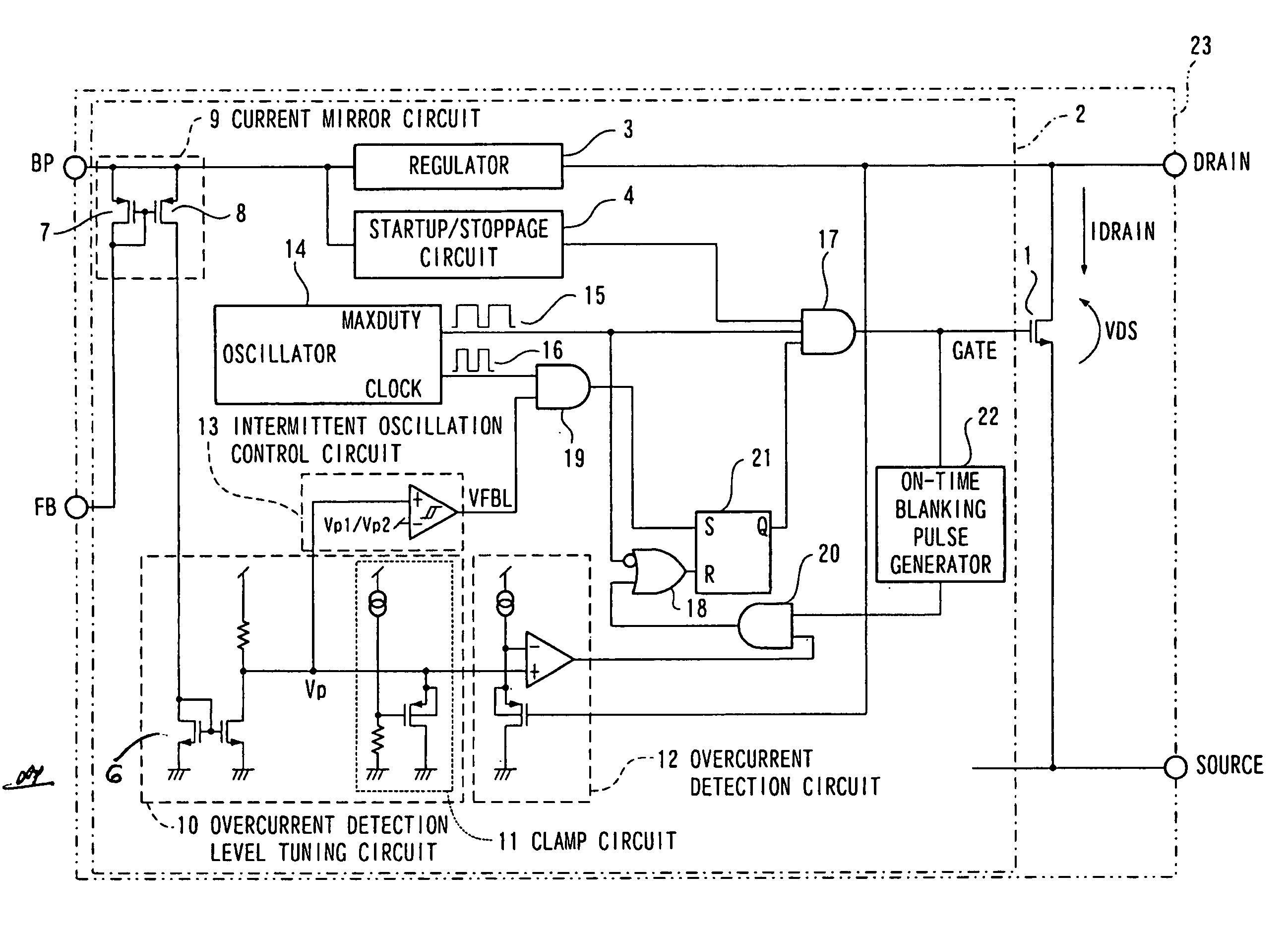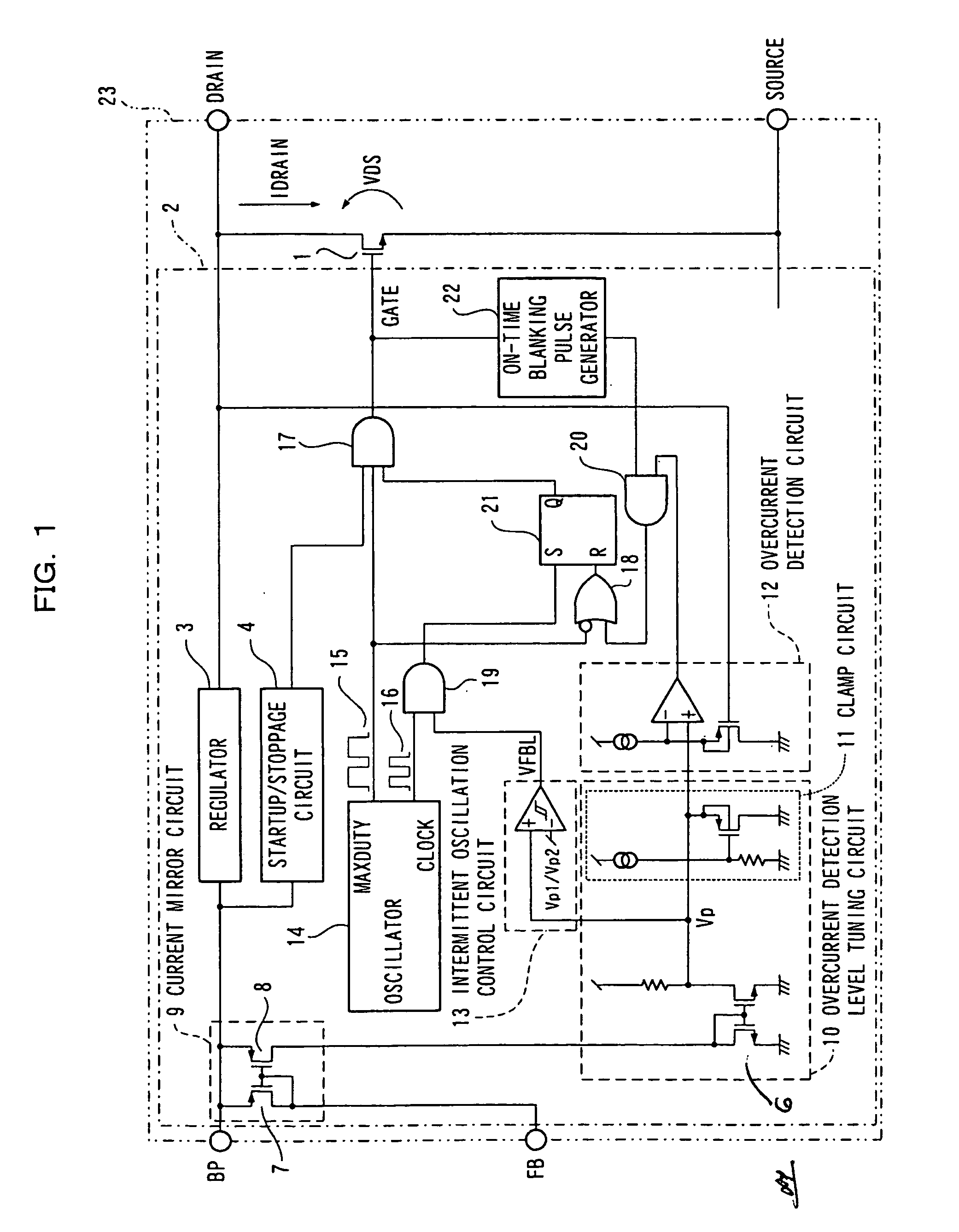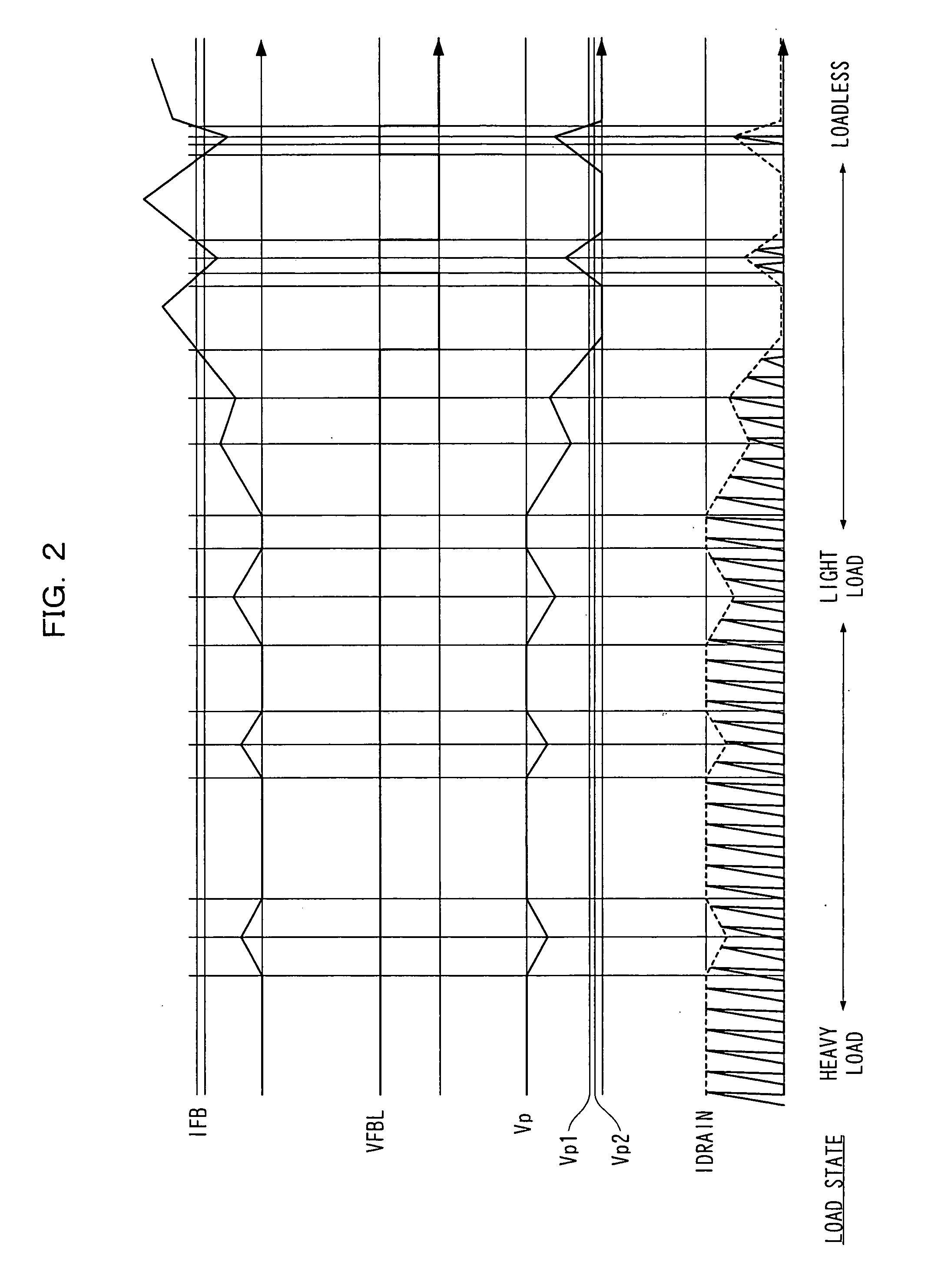Semiconductor device
a technology of semiconductors and devices, applied in the direction of electric variable regulation, process and machine control, instruments, etc., can solve the problems of increased voltage and switching loss during turnoff, increased noise, and increased voltage, so as to achieve marked reduction of power consumption, high efficiency, and lower cost power supply
- Summary
- Abstract
- Description
- Claims
- Application Information
AI Technical Summary
Benefits of technology
Problems solved by technology
Method used
Image
Examples
first embodiment
[0029]FIG. 1 is a constitutional view of the semiconductor device of the first embodiment of the present invention.
[0030]In comparison with the conventional example shown in FIG. 5, the semiconductor device of FIG. 1 differs in that a current mirror circuit 9, an overcurrent detection level tuning circuit 10, a clamp circuit 11, an overcurrent detection circuit 12, and an intermittent oscillation control circuit 13 have been added.
[0031]The operation of the semiconductor device thus constituted will now be described using the operation waveform shown in FIG. 2. IFB in FIG. 2 denotes the FB terminal current of the control circuit 2 in FIG. 1; VFBL denotes the output signal of the intermittent oscillation control circuit 13 in FIG. 1; Vp denotes the terminal voltage connected to the+terminal of the intermittent oscillation control circuit 13; and the IDRAIN denotes the drain current flowing between the DRAIN terminal and SOURCE terminal of the switching element 1.
[0032]The BP terminal...
second embodiment
[0036]FIG. 3 is a constitutional view of the semiconductor device of the second embodiment of the invention. The circuit constitution and operation are also completely the same except for the fact that the overheating protection circuit 24 is added to the semiconductor device of the first embodiment shown in FIG. 1.
[0037]The overheating protection circuit 24 is a circuit for protecting a semiconductor device 23, which comprises the switching element 1 and control circuit 2, from heat emitted by the semiconductor device 23 by means of the ON / OFF control of the switching element 1. Examples of protection afforded by the overheating protection circuit 24 include a latch mode (a mode in which the ON / OFF control of the switching element 1 is completely stopped until this ON / OFF control is cancelled by cancellation means when the temperature exceeds that prescribed), and a self-feedback mode (a mode in which the ON / OFF control of the switching element 1 is stopped when the temperature exc...
third embodiment
[0038]FIG. 4 is a constitutional view of the semiconductor device of the third embodiment of this invention. The semiconductor device of the third embodiment of the present invention shown in FIG. 4 pertains to the overcurrent detection method, and, with regard to the method of detecting the ON voltage of the switching element 1, the semiconductor device of the first embodiment in FIG. 1 has a certain fixed current ratio with the switching element 1, the operation being the same as the first embodiment of the present invention except for being different by virtue of being a method in which a sense MOSFET 25 connected in parallel to the switch element 1 and a sense resistor 26 connected in series to the source terminal of the sense MOSFET 25 are used and the voltage across the terminals of the sense resistor 26 is detected.
[0039]Further, by adding the overheating protection circuit 24 as shown in the second embodiment of the present invention above to the third embodiment of the pres...
PUM
 Login to View More
Login to View More Abstract
Description
Claims
Application Information
 Login to View More
Login to View More - R&D
- Intellectual Property
- Life Sciences
- Materials
- Tech Scout
- Unparalleled Data Quality
- Higher Quality Content
- 60% Fewer Hallucinations
Browse by: Latest US Patents, China's latest patents, Technical Efficacy Thesaurus, Application Domain, Technology Topic, Popular Technical Reports.
© 2025 PatSnap. All rights reserved.Legal|Privacy policy|Modern Slavery Act Transparency Statement|Sitemap|About US| Contact US: help@patsnap.com



